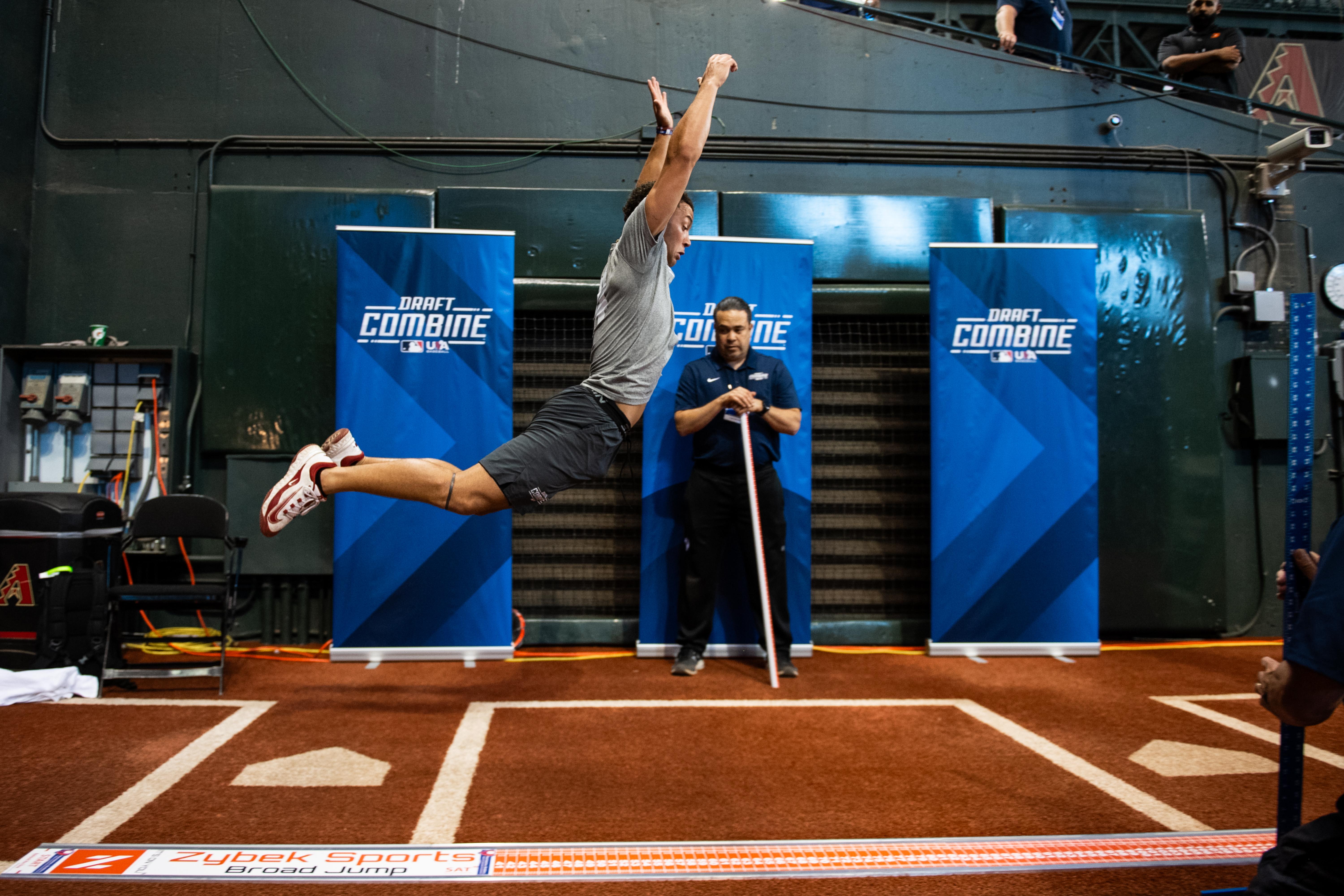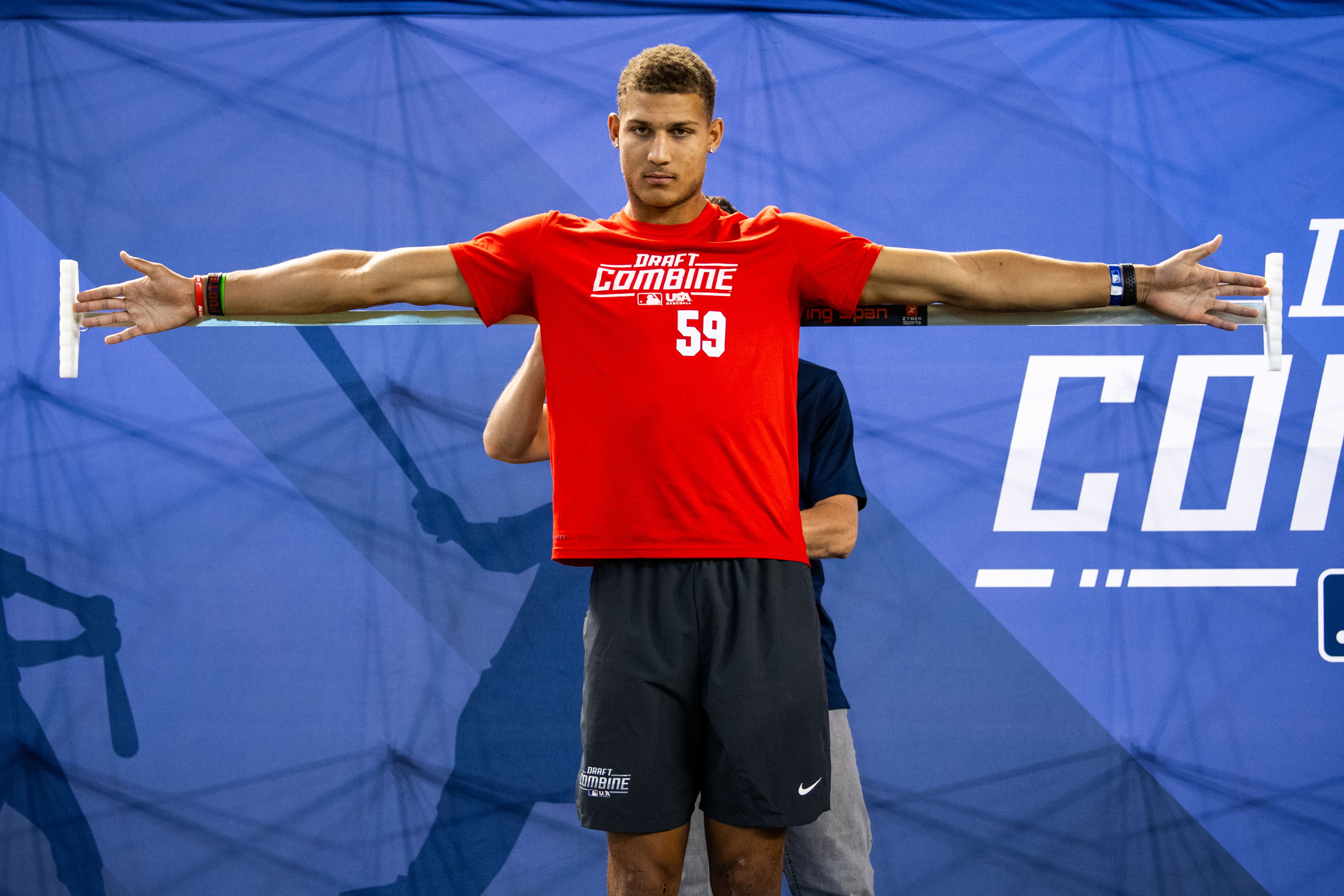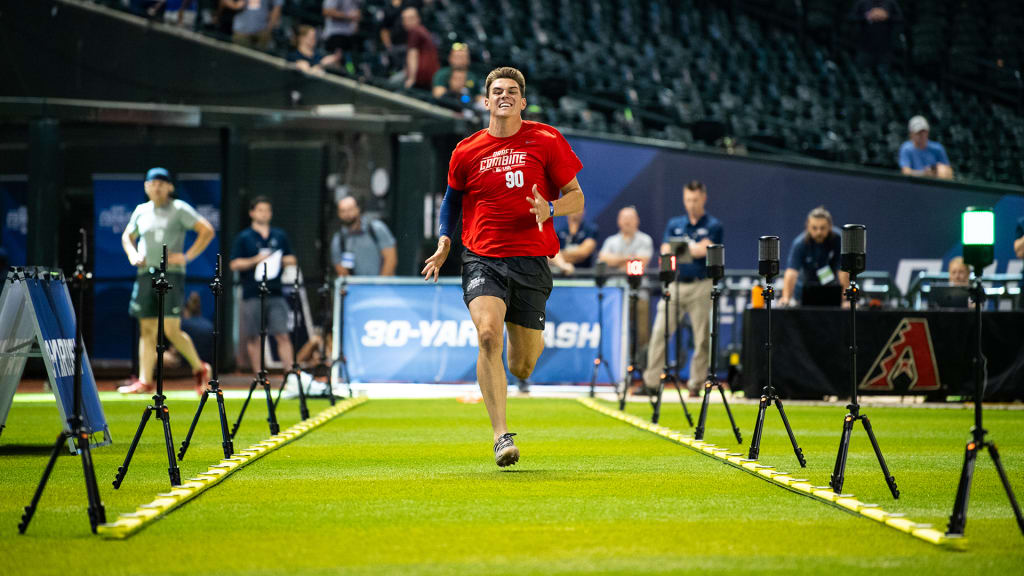PHOENIX -- After two solid hours of medical, physical and biomechanical assessment, Eric Bitonti arrived at the culmination of the MLB Draft Combine’s strength and conditioning segment with a single goal:
Break four seconds in the 30-yard dash.
For a player as massive as Bitonti -- a shortstop who is listed at 6-foot-4, 215 pounds -- that’s no easy order. But the California high school kid here to showcase his skills for scouts went to the line, took a standing sprint position and then blazed past the electronic timers lined up in Chase Field’s outfield grass in a flash.
After he crossed the finish line, he was told his time: 3.98 seconds.
“Got it,” Bitonti said. “That was cool. I’ve been doing a lot of sprint work, a lot of uphill sprints, running a lot, a lot of plyometric work, explosive stuff.”
You don’t get to the Combine without explosive baseball ability. But once here, a player’s skills are studied in more intricate -- and accurate -- detail than they had likely ever experienced before.
The portion of the Combine broadcast by MLB Network shows batting practice, bullpen sessions and player interviews, and that’s a great way for fans to get to know the next wave of talent matriculating toward the big leagues. But for clubs, some of the more meaningful information accrued at the Combine comes after those cameras click off, in a setup that is perhaps less TV-friendly but fascinating in its attention to detail.
Players who take part in the strength and conditioning portion of the program have their height, weight, movement, stance, strength, jump, motion, posture and body composition measured by a team of about 80 medical and strength and conditioning personnel.
Separate from the strength and conditioning testing, players can also take a complete physical exam at the Combine. If a player takes a physical at the Combine and is drafted, the club that selects them must offer a bonus that is at least 75 percent of the recommended bonus for that Draft slot.
The program is run by Tim Maxey, the strength and conditioning coordinator jointly hired by MLB and the MLB Players’ Association.
“Anyone’s son or daughter should be able to go through this and feel confident about it and feel safe and feel like you’re being respected,” Maxey said. “There’s people who help formulate this -- former club people and current club professionals.”

The Combine creates a log of objective information that the 30 clubs can then access and use to draw their own conclusions. The ultimate goal is accuracy, which is why Maxey uses an expansive team of medical and performance personnel -- the roster includes Major League strength coaches, military members, members of Evansville University’s respected physical therapy program and local physical therapy students from Northern Arizona who serve as scribes.
“We feel very confident in the assessments we’re working on,” Maxey said. “The information is available to the players as well as the clubs. We just want to make sure we do right by the players, do right by the clubs and keep the goal of accurate information.”
From a club perspective, the information acquired from the Combine is not just about the current state of the player but also, potentially, future projection. For instance, a team might look at the data and determine how much lean muscle mass a player can conceivably take on as he grows or might see certain elements of balance or strength that can be improved. That can impact where a player is positioned on Draft boards.

Here's a rundown of what a player goes through during the Combine’s strength and conditioning assessment:
Body measurements: Before a player heads out to the field for the assessments that are completed in front of scouts, media and others, he has a more private evaluation that includes still posture images, body composition measurements and frame measurements. A movement assessment video is taken so that those who aren’t in attendance for the Combine can see how the athlete moves.
Range of motion: Once on the field, players are greeted by a line of exam tables assembled in the shallow outfield grass. They have the range of motion of their necks, shoulders, elbows, hip angles and thoracic spines tested and measured. The goal is to see how the athlete moves passively.
Movement: Next, a player is put through more active, functional movements, such as squats, lunges and push-ups.
Balance: At this station, a player completes what is called a Y-balance test, where strength, stability and balance in various directions are measured. The athlete balances on one leg while reaching as far as possible with the other leg in three separate directions.
Grip: The grip strength test measures the strength of the hand and forearm muscles. It also can demonstrate how a player’s core and neck function.
Warmup: Players go through the usual warmup drills they would do as part of the pregame batting practice routine. Light jogging, knee lifts, etc.
Jumps: Force plates (mechanical sensors) are used to measure the ground reaction forces as players complete vertical jumps (with both no arm swing and arm swings) and broad jumps.
Sprint: Players are measured in the 30-yard sprint -- the equivalent of the distance from base to base (90 feet). They do one practice run to warm up, then two runs that are professionally timed.

Roughly an hour and a half to two hours after it began, the player’s assessment is complete. Still breathing heavily just after his final sprint, Bitonti said he was glad he had agreed to take part in this element of the Combine.
“It didn’t feel like two hours,” he said. “Everything went quick. I think all the data is going to help, especially in the weight room, to get you faster and stronger, and that will help you on the field. All this stuff has a purpose.”
